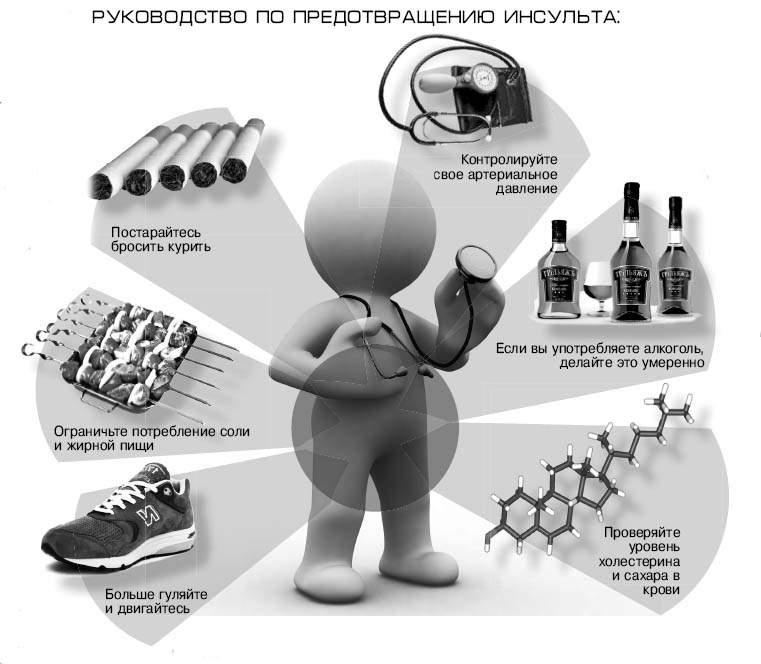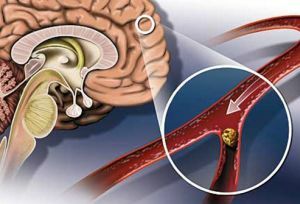 Stroke is a severe consequence of a disorder in the normal functioning of cerebral vessels.
Stroke is a severe consequence of a disorder in the normal functioning of cerebral vessels.
Most often it is diagnosed in people of mature and advanced age, although it does not bypass the young.
Recently, as a result of various health problems, you can hear an extremely unpleasant diagnosis - a stroke.
Depending on the cause of its occurrence, the is divided into several species of , one of which is ischemic stroke. So what is its feature?
Ischemic stroke is a disease of the brain, caused by impaired circulation and death of brain cells. Also known as cerebral infarction.
Contents of
- What happens during an attack and its causes
- Characteristic symptoms for
- disease Lesions of the left and right hemispheres: what's the difference?
- Left hemisphere stroke
- Right hemisphere stroke
- Diagnosis
- How is
- treated Complications and consequences
- Rehabilitation and prognosis
- Prevention
- Video: How to live after a stroke?
What happens during an attack and the cause of its occurrence
The causes of this disease can be varied - starting from the disturbances of the processes occurring in the body and ending with stresses and bad habits.
Isolate the main cause of cerebral ischemic stroke - clogging of arteries with thrombi ( blood clots).
As a result, the brain can not receive enough oxygen to function. But, as you know, violations of the normal work of the whole organism and its individual organs and systems do not appear out of nowhere.
Any deviations from the norm of are the result of an unhealthy lifestyle.
On the other hand, the ischemic impulse of is a consequence of cardiovascular system disorders, hypertension, leukemia, diabetes, atherosclerosis. 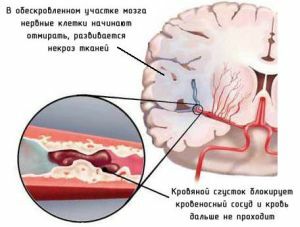
A number of the above causes of this disease is an excellent soil for triggering biochemical reactions leading to the process of brain drain and, as a result, its killing.
There is two types of ischemic impulses: cerebellar infarction and lacunar ischemic stroke of the brain.
At the initial stage of the cerebellar infarction, nausea, dizziness, and vomiting are observed. This is followed by a feeling of compression of the brain stem, which is caused by edema of the cerebellum.
As for lacunar infarction, there is a significant compaction of the walls of the arteries of the brain, characteristic of hypertension and diabetes mellitus. This type of stroke passes without any characteristic symptoms.
Characteristic Symptoms for
Disease Depending on which part of the brain there are problems with oxygen transfer, various symptoms manifest themselves:
- numbness of the limbs;
- traffic coordination problems;
- hypersomnia;
- loss of consciousness;
- reduced sensitivity;
- vision impairment;
- occurrence of headaches;
- appearance of dizziness;
- inability to control one's emotions;
- confluence in coma.
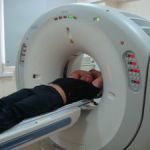 Have you decided to do a tomography of the brain and do not know how much it costs to mrt the brain? The answer to this and many questions in our material. It should be remembered that Chlorprotixen is instantly addictive, and analogues of the same drug are less dangerous to health. The choice is yours.
Have you decided to do a tomography of the brain and do not know how much it costs to mrt the brain? The answer to this and many questions in our material. It should be remembered that Chlorprotixen is instantly addictive, and analogues of the same drug are less dangerous to health. The choice is yours. Lesions of the left and right hemispheres: what is the difference?
Our brain consists of two hemispheres, through which arteries carrying blood also pass. Therefore, a stroke can hit these two parts of the independently of each other and in each of the cases their violations are traced.
Left hemisphere stroke
The left hemisphere is responsible for speech functions.
Thus, with left hemisphere infarction, problems with speech device, logical thinking, paralysis of the right side of the body and facial muscles on the right side are traced.
people with are more vulnerable to this type of left cerebral infarction, suffering from arrhythmia, overweight, high cholesterol and those whose blood vessels are prone to clots.
The physical activity of the people who transferred it is restored more quickly than after the defeat of the right side. After the rehabilitation period, patients experience difficulties with the perception of foreign speech, written information, partially or completely lose the ability to speak, suffer from reaction problems( inhibition) and memory.
Ischemic stroke of the left cerebral hemisphere is much more common than the right one.
Right hemisphere stroke
The right hemisphere is responsible for the perception of the surrounding, emotions, feelings, creativity. Therefore, at first it is much more difficult to diagnose it.
 When is affected, the is depressed, passive, short-term memory problems( remembering all events from the past), paralysis of the left side of the body and facial muscles on the left side, impaired perception and sensation, ignoring the left side of the space.
When is affected, the is depressed, passive, short-term memory problems( remembering all events from the past), paralysis of the left side of the body and facial muscles on the left side, impaired perception and sensation, ignoring the left side of the space.
The recovery period after a right heart hemorrhage takes a longer period of time than the left one. In patients, it causes a lack of sensation of their limbs, as parts of their own body or the presence of more hands or feet.
When the right hemisphere is affected, the general cerebral symptoms prevail over the focal ones and are characterized by their sudden appearance and progressiveness.
In a short period of time , focal symptoms of appear, combined with common ones - vomiting, dizziness, loss of consciousness. Patients lose the ability to correctly sense the speed of movement of objects, their shapes and sizes.
Diagnosis
For initial diagnosis of ischemic stroke, the patient is asked to perform several actions. :
- Raise both hands above the head, which, as a result, should be at the same height.
- Smile. At a stroke the corners of the patient's mouth will be directed in different directions, and the smile is distorted.
- Tell a complex sentence. The patient will have problems with the diction.
- Get your tongue out. When a stroke, it can be bent or sagged to the side.
How is the treatment of
To treat ischemic stroke of the brain urgent urgent hospitalization of a person , who has been identified with a stroke, is needed.
The tomogram of the brain is made, which allows to determine the level of tissue damage. After this, the doctor has enough information to prescribe the proper treatment. The patient is injected with a medicinal preparation - heparin - intravenously.
Along with this, controls blood clotting and heart function. Immediately after the diagnosis is established, ischemic stroke of the brain is treated, which implies itself:
- monitoring the correct functioning of the heart;
- rest of the patient;
- procedures to improve blood circulation, especially on sites adjacent to the affected area.
The therapy should be started as soon as possible after the diagnosis was identified. This, combined with early rehabilitation, will avoid the  lethal outcome and reduce the degree of disability of patients.
lethal outcome and reduce the degree of disability of patients.
After the patient is discharged from the clinic, the recovery process continues, which takes quite a long time. Proper nutrition in combination with sufficient rest will give their results and will be able to prevent a second stroke.
A balanced diet is needed to counteract ischemic cerebral stroke, which contains the following substances:
- fruits and vegetables containing fiber;
- meat as a source of protein, allowing to accelerate the set of muscle mass;
- purple and red fruits and vegetables containing anti-cyanidins: grapes, beets, pomegranate, eggplant, plums, etc.;
- preparations based on antioxidants.
Doctors recommend avoiding the use in large quantities of such products, as:
- red meat;Flour and sweet;
- dairy products;
- eggs;
- saturated fats of a transgenic, hydrogenated nature and animal origin;
- vegetable oils in large quantities.
In this case, the diet involves the use of liquid, taking into account 30 ml per 1 kg of weight, which on average is 1,8-2,2 l.
Complications and consequences
As everyone knows, the brain is responsible for the correct functioning of organs throughout the body.
Thus, with the defeat of this part of the body, not only she suffers, but the rest of the body for which she responds. Therefore, the consequences of cerebral ischemic stroke may be diverse:
- speech disorders, which are difficult to count, write and read;
- disorders in behavior that manifest themselves as aggression towards others, a slow response to external stimuli;
- problems with the emptying of the body;
- psychological disorders in the form of depression, low self-esteem, causeless laughter or crying;
- impairment of motor functions;
- violation of the swallowing function, which makes it impossible for a normal meal;
- epilepsy.
Rehabilitation and prognosis
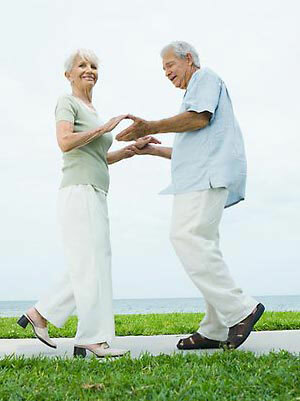 Usually, for a period of rehabilitation after an ischemic stroke of the brain, it takes a lot of time.
Usually, for a period of rehabilitation after an ischemic stroke of the brain, it takes a lot of time.
It is to prevent complications of disease in order to prevent its reappearance, social and psychological adaptation of a person and restoration of functions lost during illness.
Restoration of impaired functions is slow, so patients who have suffered a stroke require special attention and careful care.
Unfortunately, most of the consequences of stroke are incurable to , depending on the severity of the disease, and they remind a person of themselves all their lives.
Prevention of
First of all, when talking about prevention, it should be noted that hypertension is often the cause of for the onset of ischemic cerebral stroke.
Therefore, it is necessary to constantly maintain normal blood pressure to prevent such consequences.
This can be achieved by while driving an active lifestyle or taking medications to lower pressure.
The second item should be noted blood cholesterol level , which should be regularly monitored and limited to the use of products containing it in large quantities. This will reduce the risk of blood clots.
In general, refusal to smoke cigarettes and drinking alcoholic beverages, as well as maintaining a healthy lifestyle , containing physical activity, can significantly reduce the risk of developing both a stroke and other health problems.
Video: How to live after a stroke?
How to live after discharge from a hospital after an ischemic stroke. A tough conversation with those who underwent ischemic stroke, who wish or do not want to live a full-fledged, normal life.


